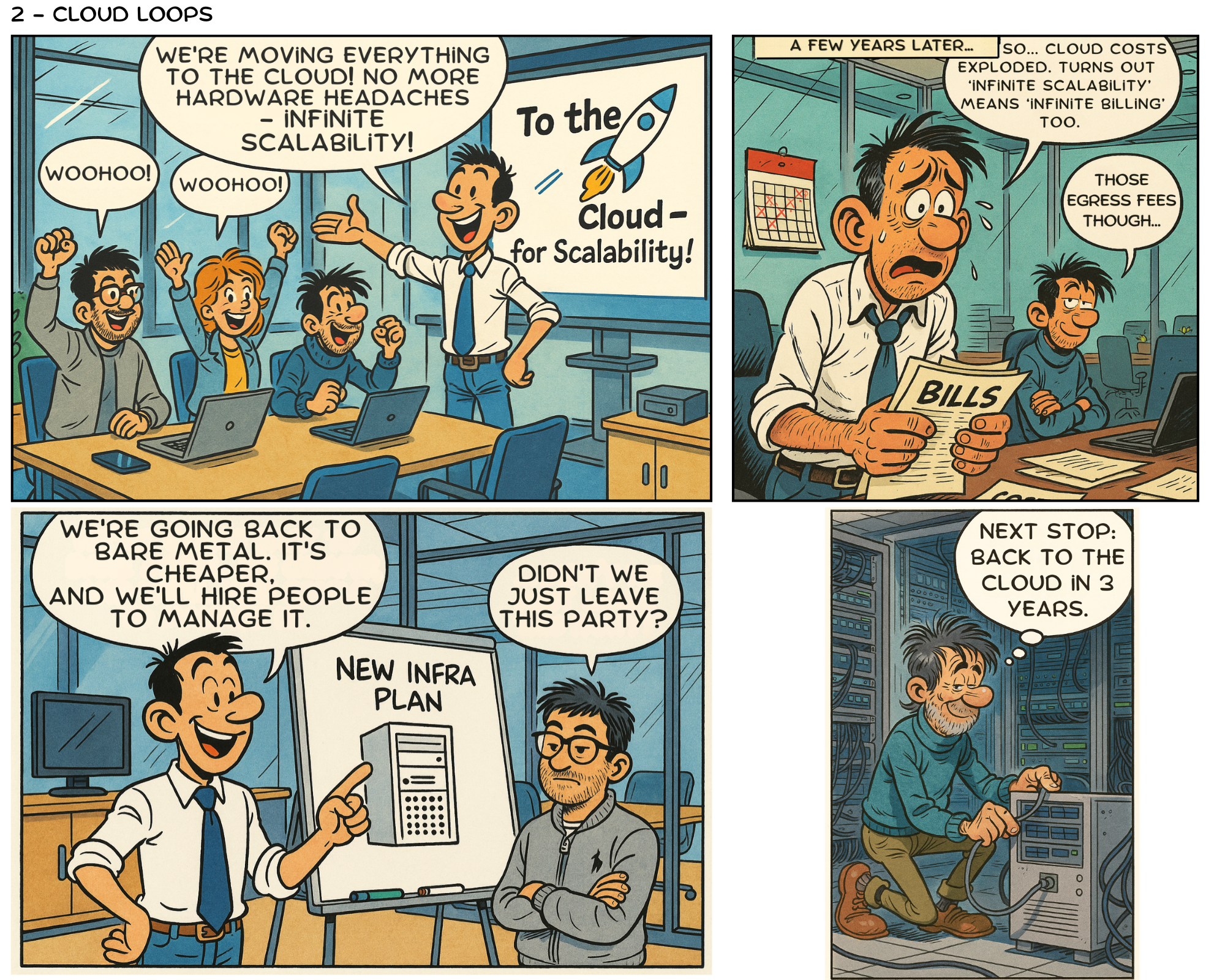Cloud Loops

It happened during a mission for a client. They had decided to move everything to AWS, hoping to scale faster and more easily than with their old bare-metal self-hosted infrastructure.
At first, everything looked perfect. Deployments were smoother, scaling was instant, and everyone was proud of how modern it all felt. The promise of “infinite scalability” seemed within reach.
But then, the invoices started growing. Each month, the costs climbed higher, and every time the cluster expanded, the bill followed.
It quickly became clear that infinite scalability also meant infinite billing.
After a few years of trying to optimize, the client made a bold decision: they chose to move back to bare metal.
Their reasoning was simple: full control, predictable costs, and no more surprises at the end of the month. And just like that, the loop was complete.
I couldn’t help but smile when they announced it.
🌍 A note on digital sovereignty
Beyond the humor, this story reflects a real trend happening right now in Europe. More and more organizations are considering self-hosting again and not just for cost control, but also to regain digital sovereignty and reduce their dependency on global cloud giants.
The recent AWS outage, which made countless services unreachable, reminded everyone of how fragile this dependency can be. It sparked once again the question of how to balance efficiency, independence, and resilience.
Because while the cloud makes things easy, real sovereignty sometimes means keeping your feet (and your servers) firmly on the ground.
And you, have you experienced the “cloud loop” in your organization? What drove your infrastructure decisions?